10 Best Compression Socks For Shin Splints – 2024
Defeat the training lethargy in a stylish way with these pain-relieving hosieries.
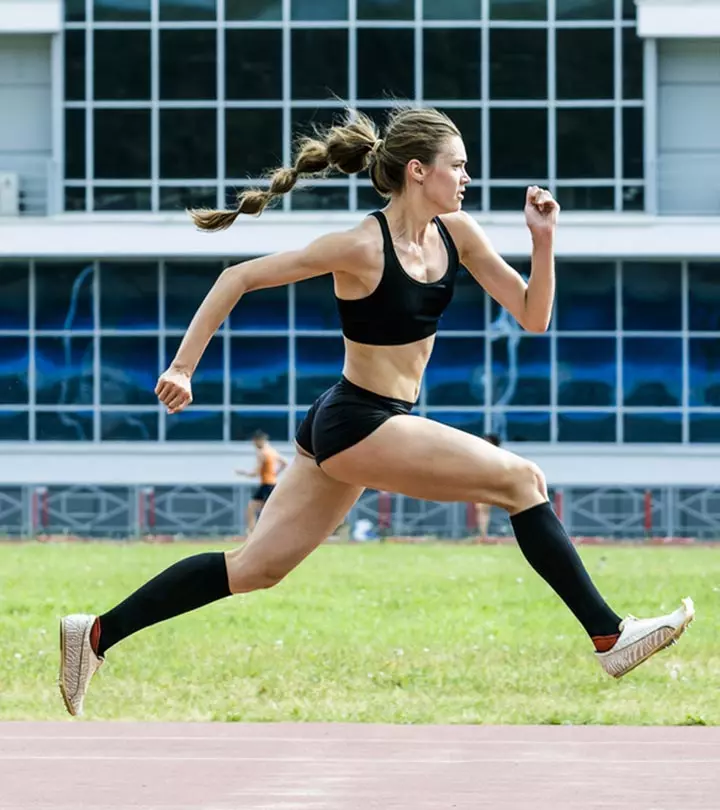
Image: Shutterstock
Training everyday for that marathon next month or simply putting your legs through some rigorous workouts? If yes, you’ll definitely need a pair of some of the best compression socks for shin splints, Achilles tendonitis, plantar fasciitis, and other forms of leg pain. Why, you ask? For starters, it boosts circulation in your legs while supporting your veins, reduces swelling and pain caused by varicose veins, and helps improve lymphatic drainage.
Why miss out on these wonderful benefits when you can simply get a pair at the click of a button? Don’t know where to start, what to look for, or how to choose one? Don’t worry, we’ve got all of that covered right here. All you need to do after that is get yourself a pair or two (or however many you want). We have compiled a list of some of the bestselling compression socks for shin splints. Let’s get started.
In This Article
10 Best Compression Socks For Shin Splints That Will Heal Your Legs
No products found.
Stay ahead of the game with a little help from these incredible compression socks. It’s designed with non-slip cuffs, so you can focus on staying fit and active without ever worrying that the socks may slip downward. It comes with a reinforced toe that helps protect your feet against blisters and abrasions, while the padded heel helps prevent heel spurs. Made with a clima-pro system, it offers high breathability, temperature control, and even helps prevent odors. According to reviews, these socks are comfy and fashionable. The graduated compression it offers helps boost circulation, thereby improving muscle endurance and aiding in quick athletic recovery. What’s more, it comes in a wide range of colorful pairs to suit all your preferences!
- Graduated compression
- Anti-odor technology
- Available in many colors
- Reinforced toe area
- Padded heel
- Temperature control
- May pill after repeated washing
 Caution
CautionBest For All Weather Conditions:Physix Gear Sport Compression Socks
Made with 70% nylon and 30% spandex, these socks will prepare you for work or play, day or night. Ideal for those who are constantly on their feet or those who are actively involved in strenuous physical activities, the compression and support in these socks are strategically located on the calf area to not squeeze your toes. Designed with moisture-wicking qualities, the socks are quick-drying and comfortable to wear. Suitable for all weather conditions, these 20-30 mmHg socks are also shock-absorbing and help reduce swelling in your legs. The socks have garnered positive reviews due to their comfortability and perfect sizing.
- Quick-drying
- Moisture-wicking
- Shock absorption
- Lycra fabric
- Stay-put cuffs
- Hand wash only
No products found.
If you like that free, breezy feeling on your toes when you’re working out, running, or when engaging in any sport, these open-toe compression socks will do the trick for you. Ideal for shin splints and varicose veins, these durable socks are made of high-quality nylon and spandex. The graduated compression also helps alleviate aching calves, swelling, and leg cramps. The socks provide a snug fit for the calf area and can be used for various activities, and are also functional as maternity stockings. According to reviewers, the fabric is top-notch as it provides ample breathing space for the toes and fingers.
- Available in many colors
- Boosts circulation
- Reduce muscle soreness
- Non-binding cuff
- Some may find it too long.
 Quick Tip
Quick TipNo products found.
If you love neon colors, you’ll absolutely love this pair. But the color is not the only thing to rave about with these socks. It provides compression and support for the whole leg and brings relief to the shin, calves, and feet too. The graduated compression of the socks helps reduce swelling while also increasing blood flow. If you like the soles of your feet to remain comfortable and snug, you can rest assured that the ergonomic footbed of these socks won’t let you down.
- Suitable for many sports and activities
- Graduated compression
- Reduces swelling
- Ergonomic footbed
- Available in 4 sizes
- You may need to order 1 size up.
Fashion Stylist, Michelle Wagman, adds, “An ergonomic footbed can offer multiple advantages for your feet and body. Evenly distributing your weight across your feet, minimizing pressure points, and preventing pain and discomfort, can significantly improve your overall well-being.”
No products found.
Isn’t it such a joy when clothing items we use often are also machine-washable? For example, this stellar pair that provides a comfortable and functional fit. It alleviates swelling, reduces aches, and also reduces cramps. With 20-30 mmHg graduated compression, the socks boost circulation and improve endurance. It follows the contours of your feet without feeling tight and the knit design provides unparalleled breathability. Made of 85% polyamide and 15% elastane, this pair doesn’t restrict your toes.
- 20-30 mmHg
- Improves blood circulation
- Well-ventilated
- Loose on the toes
- Reduces swelling
- Slightly expensive
No products found.
Made of 82% polyamide and 18% elastane, these socks come with a seamless closure yet they offer a snug fit. Super comfortable and machine washable, these compression socks stabilize the muscles. By providing support to the lower leg, it helps improve blood flow and alleviates calf pain and strain. The socks are lightweight, temperature regulating, and even moisture-wicking. What’s there not to love? It also comes with an elastic band around the foot that supports your arches.
- Prevents muscle soreness and leg fatigue
- Lightweight
- Moisture-wicking
- Thermal regulating
- Available in bright colors
- Slightly expensive
No products found.
Love fancy patterns and love comfort even more? If yes, these socks will blow your mind. These anti-DVT compression socks are designed to reduce swelling, pain, and fatigue. It also improves blood circulation and hastens muscle recovery. Made with 65% nylon, 20% elastane, and 15% Lycra, this moisture-wicking pair prevents odors and reduces the chances of blisters. Double stitched and knee high, these socks are ideal for long journeys, high-intensity workouts, and with the help of the non-slip cuff, you can rest assured that it will stay put. Reviewers praised the socks’ supportive fabric, which also aids in compression.
- No-slip cuff
- Moisture-wicking fabric
- Provides muscle support
- Graduated compression
- Optimized twill design
- Reinforced heel
- Some may find the toe area slightly tight.
Best For Long Hours:POWERLIX Compression Socks
- Breathable material
- Helps with calf cramps
- Enhances sports performance
- Stretchable
- Lightweight
- Moisture-wicking
- Improves blood circulation
- Non-slip cuff
- Snug fit
- Prevents muscle soreness and fatigue
- Odor-free
None
Best Highly-Stretchable Material:BLITZU Compression Socks
The BLITZU Compression Socks are made of 85% nylon and 15% spandex. They provide targeted, progressive compression in three key areas of 10 to 15 mmHg, 20–30 mmHg, and 20–30 mmHg. With their gentle squeezing action, the compression socks help increase blood flow and oxygen to the extremities, decreasing the likelihood of tired legs, swelling, and varicose veins. The circulation of blood and oxygen to your muscles is improved by wearing compression socks, which reduces venous insufficiency risk. These compression socks are designed to speed up the healing process in your muscles and joints while reducing leg swelling and providing leg pain relief. Since friction is reduced, blisters and corns are less likely to form in the seamless toe box. The very plush cushion padding works to absorb impact. Whether you suffer from shin splints, or varicose veins, or just want to minimize swelling, these socks are your best bet.
- Breathable fabric
- Unique arch support
- Helps in injury rehabilitation
- Offers ankle protection
- Highly-stretchable fabric
- No slip cuff
- Reinforced heel design
None
Best For Ankle Protection:ACTINPUT Copper Compression Socks
The ACTINPUT Copper Compression Socks are 85% nylon and 15% polyester. They have anti-moisture technology to minimize sweating, and are breathable and easy to wear. The ergonomic design keeps your feet dry throughout the day. The copper compression socks offer progressive compression of 15 to 20 mmHg, which is meant to increase blood circulation and oxygen flow, hence reducing the risk of cramping, weariness, edema, and varicose veins, as well as helping people with diabetes. The integrated elastic at the top of the socks help prevent slipping and ensure that the socks remain in their proper positions.
- Lightweight
- Moisture-wicking
- Smooth toe
- No-slip cuff
- Arch support
- Ankle protection
- Provides edema relief
- Reinforced heel design
- Prevents muscle soreness and fatigue
None
Shin splints, swelling, painful calves, varicose veins — all of these niggly issues can be a thing of the past. All you need is a good pair of compression socks to help you out. Still undecided about which one to choose? Keep the following pointers in mind.
How To Choose Compression Socks For Shin Splints
- Size
When buying compression socks for shin splints, ensure that they are not too tight nor too loose. If it’s too tight it may prevent blood flow and if it’s too loose, well, you lose out on all the benefits of compression. For a fit assessment, measure your calves before buying a pair and trust your shoe size to be a helpful guide. If your shoe size is 4-7, your calf size will typically be 11-13.5 inches, which means that the socks should measure at 5-5.5 inches. If your shoe size is 7-10, your calves should be around 13-16 inches, and the socks height should be 5.6-5.11 inches.
- Materials
If you’re dealing with shin splints, it’s probably safe to assume that you’re a runner. If you are, your best bet is to look for socks made of bamboo and polyester. For those looking for breathability, cotton is always the best choice, and a hint of cashmere makes it extra soft. If you like your compression socks to be super stretchable, choose spandex and Lycra. However, if you are an environmentally conscious consumer, opt for sustainable materials.
- Compression
Regular socks come are designed with 15-20 mmHg compression and are suitable for everyday wear but may not do anything for you if you’re planning on wearing it for long hours. For shin splints, look for socks that offer 20-30 mmHg compression. These types of socks are also known as medical class 1 socks. You can also go one level higher and buy 30-40 mmHg socks or medical class 2 socks.
- Cushioned footbed
While compression socks that offer graduated compression on the shin and calves are great, another great way to pick one is to see how well-cushioned the sole is. This too helps alleviate pain quicker.
Benefits Of Compression Socks For Shin Splints
- Increases oxygen and blood flow to the shins
- Reduces the chances of shin-related running injuries
- Boosts blood circulation
- Improves muscle recovery and endurance
- Increases muscle efficiency
- Helps in pain relief
- Reduces swelling and discomfort
- Improves lymphatic drainage
The Bottom Line
When we start working out, begin running, or engage in any physical activity, we often tend to forget pre-workout care and warming up. This especially can affect our shins, our most overlooked body part. If you’re already dealing with shin splints, one of the best recovery strategies is getting yourself a good pair (or two) or compression socks. And, you can also wear them for shin splint prevention too! You can consult your podiatrist for their opinion, or grab a pair from our list of the 10 best compression socks for shin splints and keep your legs healthy and fit, all day, every day! So, grab a pair from our list of the 10 best compression socks for shin splints and keep your legs healthy and fit, all day, every day! The Physix Gear Sport Compression Socks are made from double-stitched lycra fabric that promises good durability and comfort, while the BLITZU Compression Socks offer arch support and ankle protection. The ACTINPUT Copper Compression Socks come with anti-moisture technology that reduces sweating.
Why Trust StyleCraze?
Author Shreya Vishwanathan is an avid fitness enthusiast who stays in tune with all fitness trends. She is familiar with leg pain, or shin splits after a rigorous workout and has found an ideal solution for her readers. She can help you narrow down your search for the right compression socks for shin splints. She has meticulously researched compression socks and examined online reviews to find the best ones. These socks boost blood flow and reduce swelling, aiding recovery.
Do compression socks help shin splints?
Yes, socks with 20-30 mmHg compression helps with shin splints.
How tight should compression socks be for shin splints?
Socks with compression levels between 20-30 mmHg are ideal for shin splints. They are also known as medical class 1 socks. You can also try 30-40 mmHg socks or medical class 2 socks.
Will calf compression sleeves help shin splints?
Yes, much like compression socks, sleeves can be equally helpful.
Should you compress shin splints?
Yes, it’s a good practice to compress shin splints. You can also try icing the area to hasten the process.
Is it ok to wear compression socks every day?
Yes, it is okay to wear compression socks every day. These socks reduce pain and soreness in your feet while increasing blood circulation.
How many hours a day should I wear compression socks?
Wear compression socks at least 10 to 12 hours a day for the best results.
Read full bio of Michelle Wagman
Read full bio of Shreya Vishwanathan
Read full bio of Medha Deb
Read full bio of Aditi Naskar










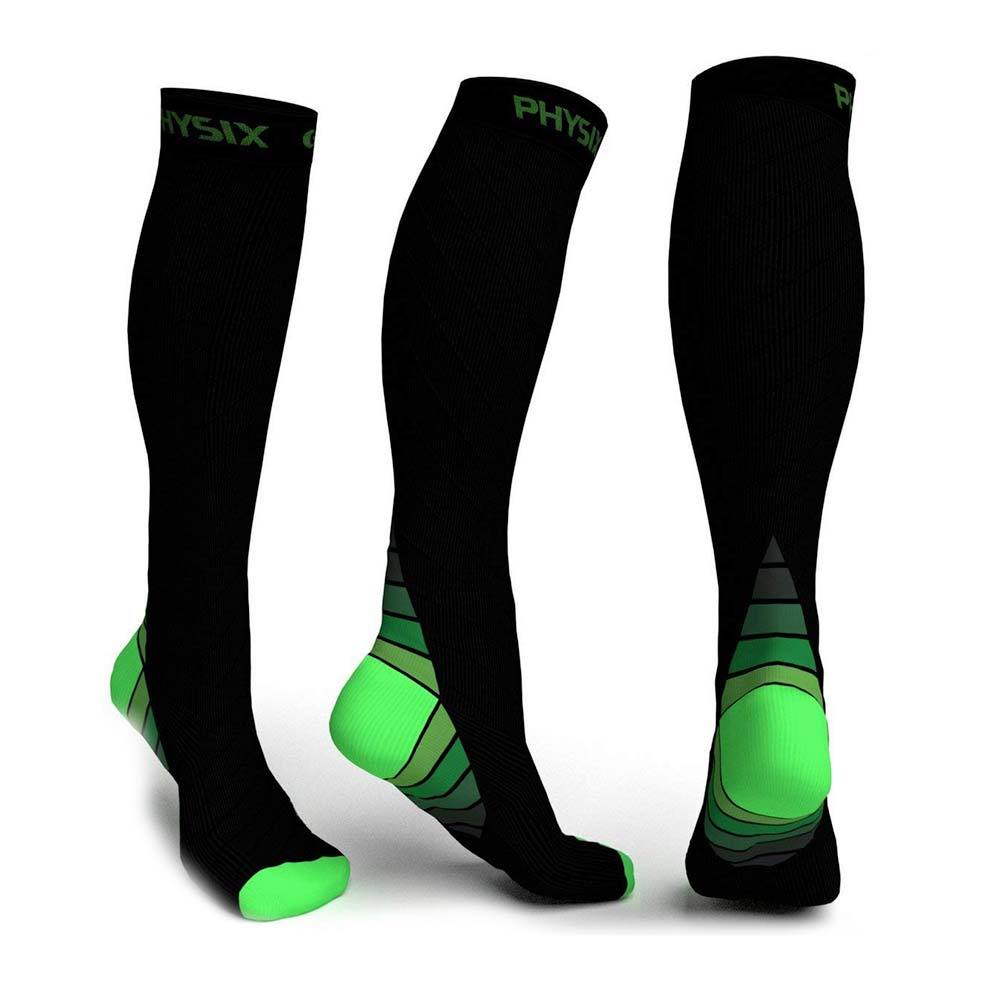


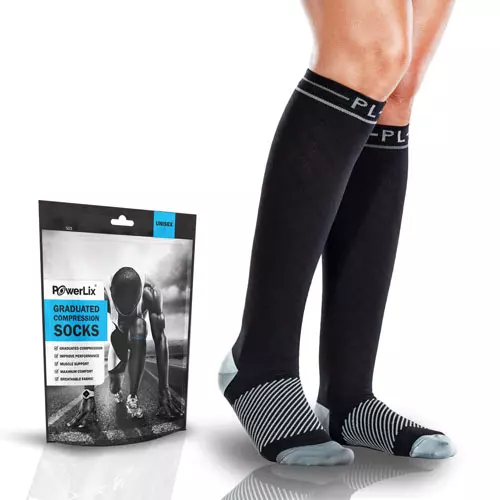

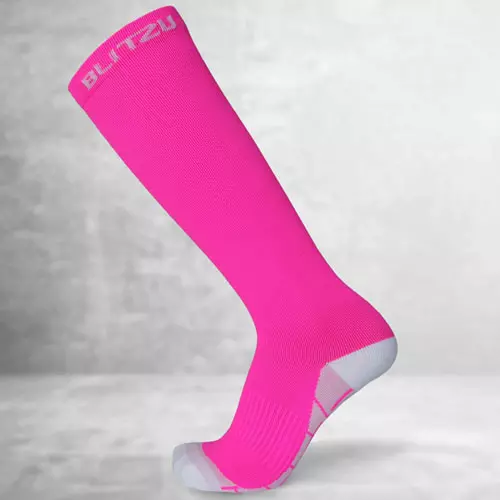

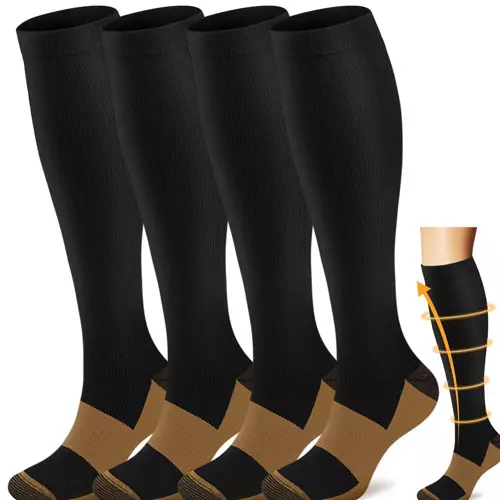



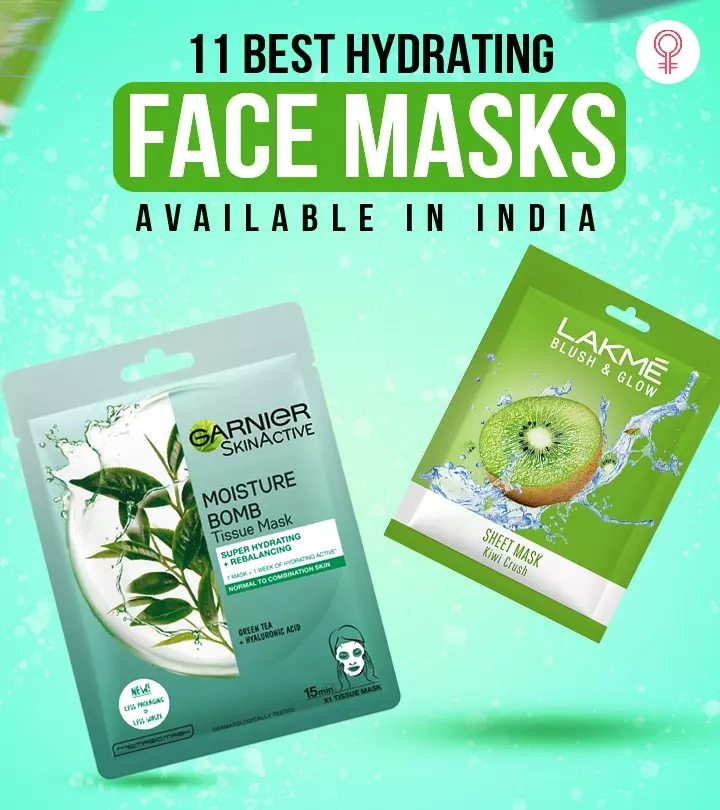
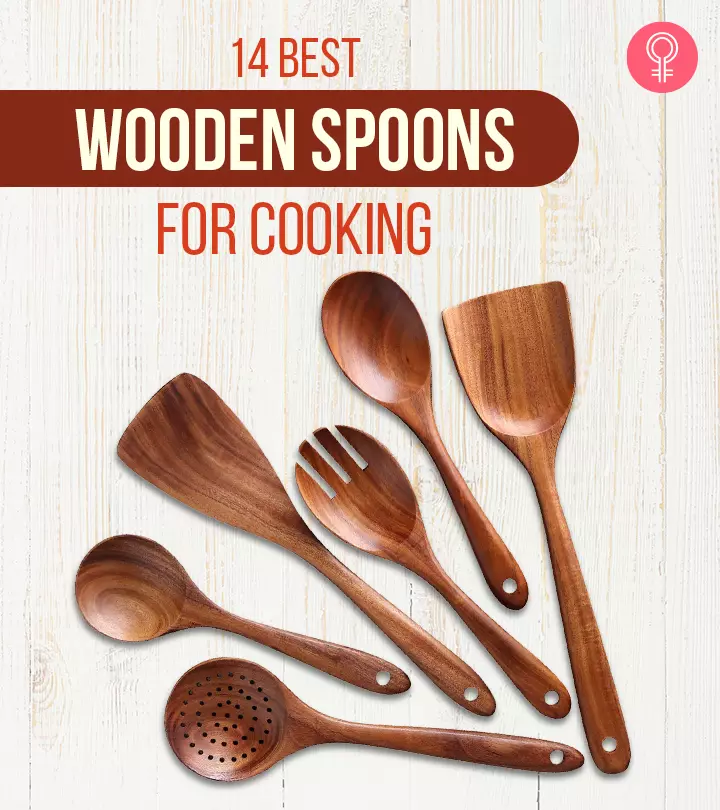
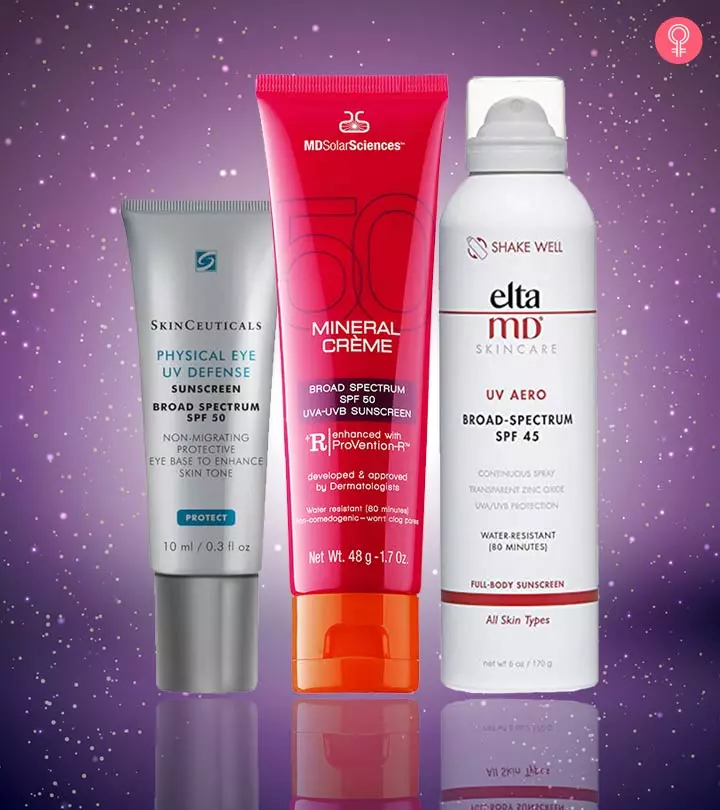
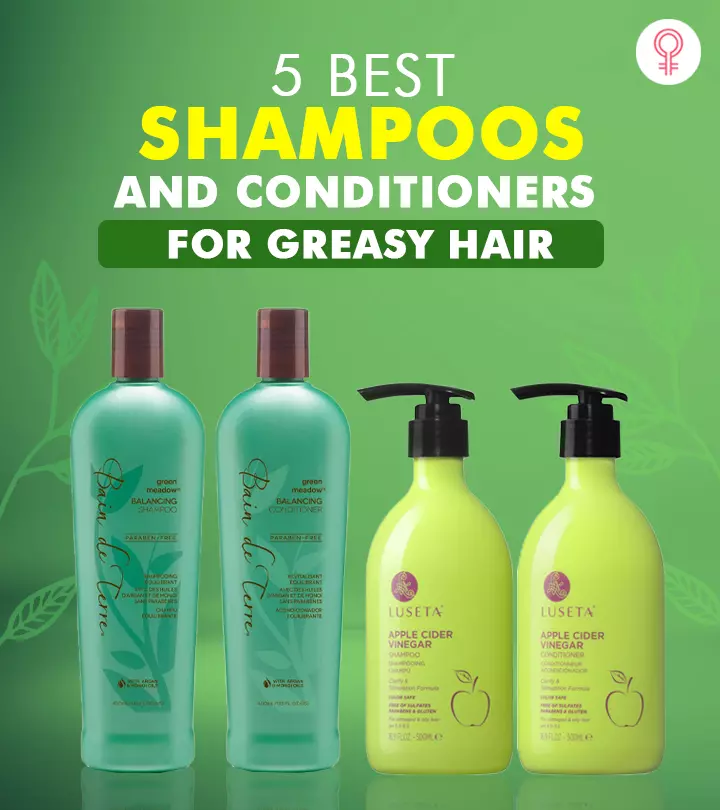





Community Experiences
Join the conversation and become a part of our empowering community! Share your stories, experiences, and insights to connect with other beauty, lifestyle, and health enthusiasts.